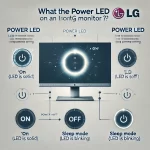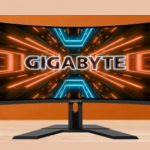Introduction
With advancements in technology, the choice of monitors has significantly expanded. Among these options, curved monitors have gained popularity due to their immersive experience. But are curved monitors good for photo editing? This article delves into the various aspects of using curved monitors for photo editing, evaluating their benefits, potential drawbacks, and comparing them with traditional flat screens.
What is a Curved Monitor?
Curved monitors are designed with a gentle inward curve that mimics the natural curvature of the human eye. This design aims to provide a more immersive and comfortable viewing experience by reducing distortion and improving depth perception. The curve can range from subtle to more pronounced, often denoted by the radius measurement (e.g., 1800R, 3000R).
Benefits of Curved Monitors for Photo Editing
Enhanced Immersive Experience
The primary advantage of curved monitors is the enhanced immersive experience they offer. By enveloping the viewer’s field of vision, curved monitors can make photo editing more engaging and visually appealing. This immersion can help editors better focus on their work, potentially leading to more precise and detailed edits.
Reduced Distortion
Curved monitors help minimize distortion at the edges of the screen. This reduction in distortion is particularly beneficial for photo editors who require accurate and consistent visual representation across the entire display. Edge distortion can be distracting and may lead to errors in photo editing, which curved monitors aim to eliminate.
Improved Depth Perception
The curvature of the monitor can enhance depth perception, making images appear more three-dimensional. This improved depth perception can aid in better judgment of spatial relationships in photos. For photo editors, this can be particularly useful when working on intricate details or when trying to achieve a more lifelike appearance in images.
Wider Field of View
A curved monitor can provide a wider field of view compared to flat screens, which is advantageous when working with large images or multitasking with multiple editing tools and windows open simultaneously. This expanded field of view allows photo editors to see more of their work at once, reducing the need for constant zooming and panning.
Drawbacks of Curved Monitors for Photo Editing
Potential Color Inaccuracy
One of the main concerns with curved monitors is potential color inaccuracy. The curvature can sometimes cause color shifts and uniformity issues, which can be problematic for photo editors who require precise color representation. Ensuring that colors are accurate and consistent across the entire display is crucial for professional photo editing.
Glare and Reflection
Curved monitors can be more prone to glare and reflection issues, especially in brightly lit environments. This can be distracting and affect the accuracy of photo editing. Editors may need to adjust their workspace lighting or use anti-glare screen protectors to mitigate these issues.
Cost Considerations
Curved monitors tend to be more expensive than their flat counterparts. For photo editors on a budget, the higher cost of curved monitors might not justify the potential benefits. It is important to weigh the advantages of a curved monitor against its cost and determine if it fits within your budget.
Curved vs. Flat Monitors: A Comparison
Visual Experience
While curved monitors provide an immersive experience, flat monitors offer a more traditional viewing angle that some photo editors might prefer for its simplicity and predictability. Flat monitors do not have the same depth perception and can be easier to use in a variety of lighting conditions.
Color Accuracy
Flat monitors are generally more consistent in color accuracy, as there is no curvature to cause potential distortions. This makes them a safer choice for professional photo editing where color fidelity is crucial. Many flat monitors are designed with color accuracy in mind and may come factory-calibrated for precise color representation.
Ergonomics
Curved monitors can reduce eye strain and provide a more comfortable viewing experience for prolonged use. However, flat monitors are often easier to position and adjust within a workspace. The ergonomic benefits of curved monitors can be significant, but they may require more careful setup to achieve optimal results.
Space and Setup
Flat monitors typically take up less desk space and are easier to mount or position in a workspace. Curved monitors, especially larger ones, can require more room and may need specific mounting solutions. Photo editors should consider their workspace limitations when choosing between curved and flat monitors.
Key Features to Look for in a Monitor for Photo Editing
High Resolution
A high-resolution monitor is essential for photo editing to ensure detailed and sharp images. Look for at least a 4K resolution for optimal clarity. Higher resolutions provide more screen real estate and allow editors to see finer details in their work.
Wide Color Gamut
Monitors with a wide color gamut, such as Adobe RGB or DCI-P3, provide a broader range of colors, essential for accurate color reproduction in photo editing. A wide color gamut ensures that the monitor can display a more extensive range of colors, which is crucial for professional editing.
Calibration Capabilities
A monitor that supports hardware calibration can help maintain color accuracy over time, which is crucial for professional photo editing. Regular calibration ensures that the colors displayed on the monitor match the actual colors in the images, leading to more accurate edits.
Uniformity Compensation
This feature helps ensure consistent brightness and color across the entire screen, minimizing potential issues caused by the curvature of the monitor. Uniformity compensation is especially important for curved monitors, where the curvature can lead to variations in brightness and color.
How to Optimize a Curved Monitor for Photo Editing
Proper Calibration
Regular calibration of your curved monitor is vital to ensure color accuracy. Use a reliable calibration tool and software to maintain consistent color representation. Calibration should be performed regularly to account for any changes in the monitor’s performance over time.
Adjust Lighting Conditions
Minimize glare and reflections by controlling the lighting conditions in your workspace. Use blinds, anti-glare filters, and position your monitor away from direct light sources. Proper lighting can significantly improve the accuracy and comfort of photo editing on a curved monitor.
Custom Monitor Settings
Explore the custom settings on your curved monitor to fine-tune brightness, contrast, and color settings to your preference and the requirements of your photo editing work. Adjusting these settings can help achieve the best possible display for editing purposes.
Use of Software Tools
Utilize software tools that can assist in maintaining color accuracy and monitor performance. Many professional photo editing programs offer built-in tools for calibrating and optimizing monitors. These tools can help ensure that your curved monitor remains accurate and reliable.
Popular Curved Monitors for Photo Editing
Dell UltraSharp U3419W
The Dell UltraSharp U3419W is a 34-inch curved monitor with a high resolution and excellent color accuracy, making it a popular choice for photo editors. It features a wide color gamut and uniformity compensation, ensuring consistent and accurate color reproduction.
Samsung CJ791
The Samsung CJ791 offers a 34-inch curved display with Quantum Dot technology, providing vibrant colors and deep blacks, ideal for detailed photo editing work. Its high resolution and wide color gamut make it a strong contender for professional use.
LG 34UC98-W
The LG 34UC98-W is another excellent option with a 34-inch curved screen, high resolution, and extensive color support, making it suitable for professional photo editing. It also offers ergonomic features such as height adjustment and tilt, enhancing its usability.
User Experiences and Testimonials
Many photo editors have shared positive experiences with curved monitors, citing the immersive experience and reduced eye strain as significant benefits. Some editors have found that the enhanced depth perception and wider field of view improve their editing workflow and productivity.
However, some users have noted issues with color accuracy and uniformity, emphasizing the importance of regular calibration and proper lighting conditions. These testimonials highlight the need for careful consideration when choosing a curved monitor for photo editing.
Expert Opinions on Curved Monitors for Photo Editing
Experts in the field of photo editing have mixed opinions on the use of curved monitors. While some appreciate the immersive experience and reduced distortion, others prioritize the consistent color accuracy and predictability of flat monitors. Ultimately, the choice depends on individual preferences and specific editing needs.
Experts recommend testing monitors in person if possible and considering the specific requirements of your photo editing work. Some professionals may find that the benefits of a curved monitor outweigh the potential drawbacks, while others may prefer the reliability of a flat screen.
Tips for Choosing the Right Monitor for Your Needs
Assess Your Priorities
Consider what aspects are most important for your photo editing work, such as color accuracy, immersive experience, or budget, and choose a monitor that best meets those needs. Make a list of must-have features and compare different models based on these criteria.
Test Before You Buy
If possible, test different monitors in a store or borrow from a colleague to get a firsthand experience of how they perform in a photo editing context. Seeing the monitors in action can provide valuable insights into their performance and suitability for your needs.
Read Reviews and Seek Recommendations
Consult reviews and seek recommendations from other photo editors to gain insights into the performance and reliability of different monitor models. Online reviews and professional opinions can help narrow down your options and make an informed decision.
Consider Future Needs
Think about your future needs and whether the monitor you choose will be able to meet them. Investing in a high-quality monitor now can save you from needing to upgrade in the near future. Consider factors such as resolution, color accuracy, and connectivity options when making your decision.
Frequently Asked Questions
Are curved monitors better for photo editing than flat monitors? It depends on individual preferences and needs. Curved monitors offer an immersive experience and reduced distortion, but flat monitors provide consistent color accuracy.
Do curved monitors cause color distortion? Curved monitors can cause slight color shifts and uniformity issues, which can be minimized with regular calibration.
How do I calibrate a curved monitor for photo editing? Use a reliable calibration tool and software to adjust the monitor’s color settings, ensuring accurate color representation for photo editing.
Can curved monitors reduce eye strain? Yes, the curvature of the monitor can reduce eye strain by providing a more natural viewing angle, especially during prolonged use.
What resolution is best for a photo editing monitor? A resolution of at least 4K is recommended for photo editing to ensure detailed and sharp images.
Are there budget-friendly curved monitors for photo editing? While curved monitors tend to be more expensive, some models offer a balance between cost and performance. Research and compare options to find a suitable monitor within your budget.
Conclusion
In conclusion, curved monitors offer several advantages for photo editing, including an immersive experience, reduced distortion, and improved depth perception. However, they also come with potential drawbacks such as color inaccuracy and higher cost. Ultimately, the choice between curved and flat monitors depends on individual preferences and specific photo editing needs. By considering key features, proper calibration, and personal priorities, photo editors can select the best monitor to enhance their workflow and produce stunning visual content.


